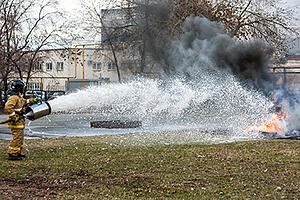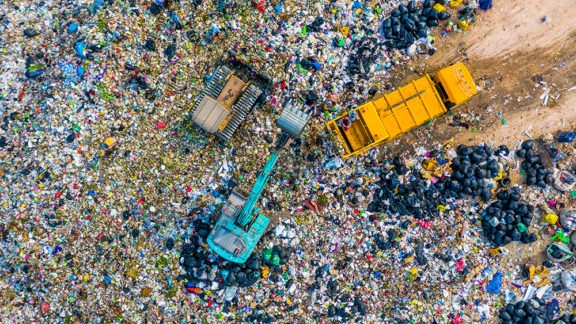In late April, the Groundwater Resources Association of California (GRA) reorganized its previously in-person conference as PFAS Week, a three-day digital symposium. PFAS, or per- and polyfluoroalkyl substances, are a group of emerging contaminants that may have adverse human health and environmental impacts.
My colleagues and I participated in this event as organizers, moderator, and attendees. A group of prominent national PFAS experts and state regulators presented on federal, California, and local programs; PFAS investigative orders and results; and California water resources. I have summarized the key regulatory updates from the symposium below. A companion blog will focus on technical updates.
Federal program updates
Environmental Protection Agency (EPA) has started a process to develop drinking water standards (i.e., maximum contaminant levels [MCLs]) for two PFAS compounds, perfluorooctanoic acid (PFOA) and perfluorooctane sulfonate (PFOS). On February 20, 2020, EPA issued preliminary determinations to regulate PFOA and PFOS. This process may take five to seven years.
EPA has also initiated the regulatory development process for listing PFOA and PFOS as hazardous substances under the Comprehensive Environmental Response, Compensation, and Liability Act (CERCLA). If finalized, EPA would be able to require potentially responsible parties to investigate and remediate these compounds at Superfund sites. This would also grant the agency the ability to recover remediation costs associated with PFOA and PFOS cleanups from private entities that are legally responsible for the contamination.

While domestic manufacturers have phased out the production of long-chain PFAS chemicals, some industrial manufacturers and consumer product retailers continue to import them to the U.S. in certain products. To address this loophole, EPA issued a supplemental proposal to ensure that new uses of certain persistent long-chain PFAS chemicals in surface coatings cannot be imported into the U.S. without notification and review under the Toxic Substances Control Act (TSCA).
EPA will increase its understanding of national PFAS use with the release of a new list of 172 PFAS chemicals subject to reporting as part of the Toxic Release Inventory (TRI) program for 2020.
California program updates
As of January 1, 2020, new California legislation authorizes the State Water Resources Control Board (SWRCB) to order public water systems to monitor for PFAS. Water systems must now report any confirmed PFAS detection to customers or take the contaminated water source out of service. In addition, water systems must report any exceedance over a PFOA/PFOS notification level (NL) to the local governing board within 30 days and any exceedance over a PFOA/PFOS response level (RL) requires the system to take the water source out of use or provide public notification within 30 days. NLs are thresholds that require water systems to communicate their findings with customers while the higher RLs require systems to remove the source of the contaminant entirely.
Like its federal counterpart, California EPA (CalEPA) has started the process of developing MCLs for PFOA and PFOS. The expected timeline of key milestones includes:
- May 2020 – Office of Environmental Health Hazard Assessment (OEHHA) releases draft public health goals (PHGs) for public comment
- Summer 2022 – SWRCB releases draft MCLs for public comment
- Fall 2023 – Office of Administrative Law approves MCLs and they become effective
SWRCB issued PFAS Investigative Orders in 2019 to airports, landfills, and chrome plating operations. As of May 4, 2020, landfills had submitted 120 Final Reports and airports had submitted 15. SWRCB will use the reported data to understand PFAS impacts in the state and to inform future regulatory decisions.

SWRCB plans to send out additional PFAS Investigative Orders, which will require identification of PFAS-containing materials’ storage, use, and release area, and delineation of PFAS impacts in soil and groundwater. Future orders will be issued to the following entities:
• Wastewater treatment facilities, for sampling of influent, effluent, and biosolids. SWRCB will select facilities based on the quantity of wastewater treated at the facility.
• Oil refineries and bulk terminals where aqueous film-forming form (AFFF) has been stored/used.
At the local level, some Regional Water Quality Control Board regulators have started to request PFAS sampling at cleanup sites not originally opened for PFAS contamination based on the historical operations at the sites.
As California and other states develop additional and stricter regulations, we expect to see an increasing number of requirements to investigate PFAS sources.
If you have questions about this blog or other PFAS and emerging contaminants issues, please contact any of us from Haley & Aldrich who attended PFAS Week:
Murray Einarson
Elie Haddad
Sarah Mass
John Xiong
Published: 5/18/2020
- Aerospace
- Industrial and manufacturing
- Automotive
- Consumer products
- Food and beverage
- Manufacturing
- Contaminated site management
- PFAS
Author

Principal Consultant, Applied Research Leader




